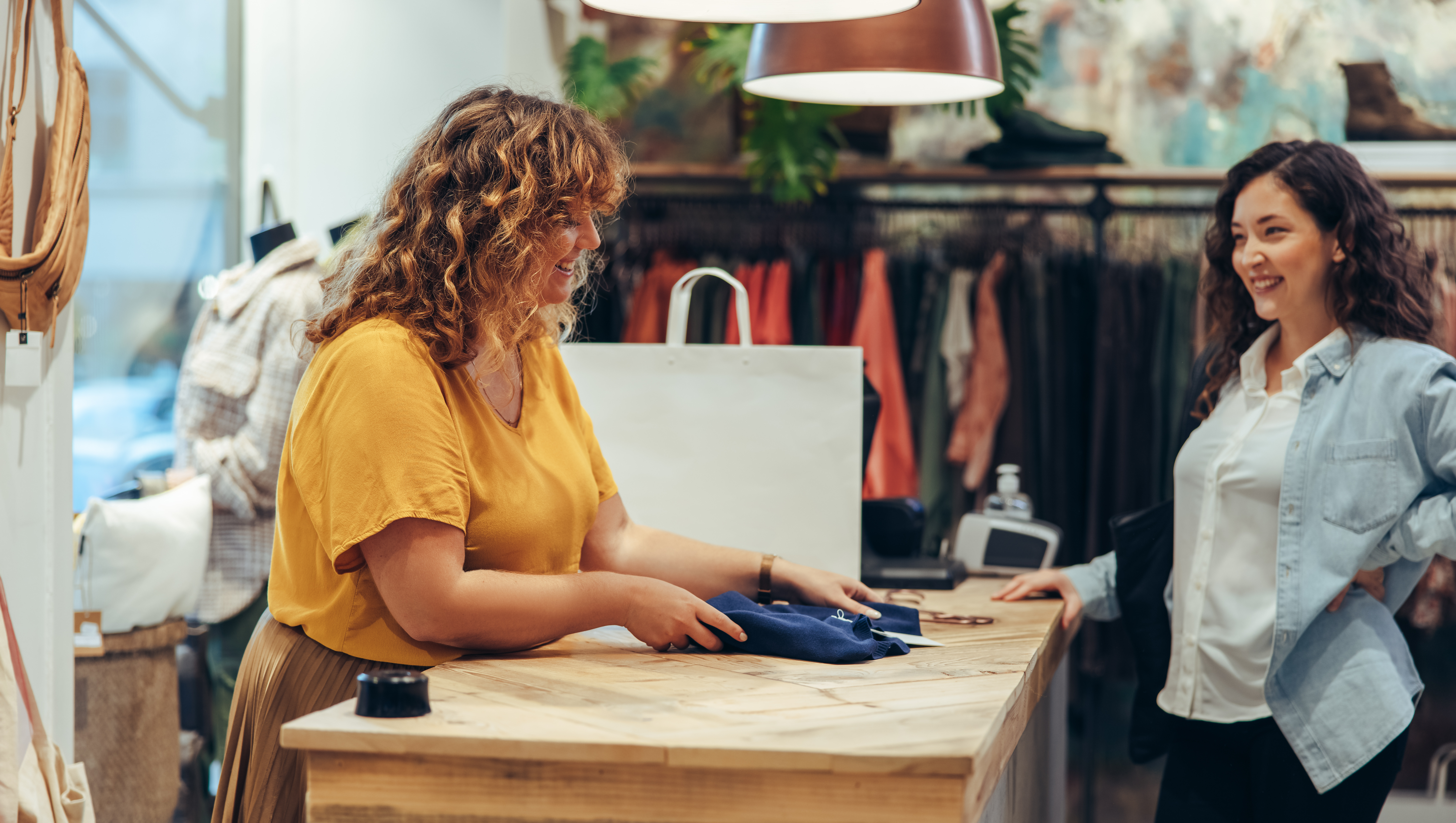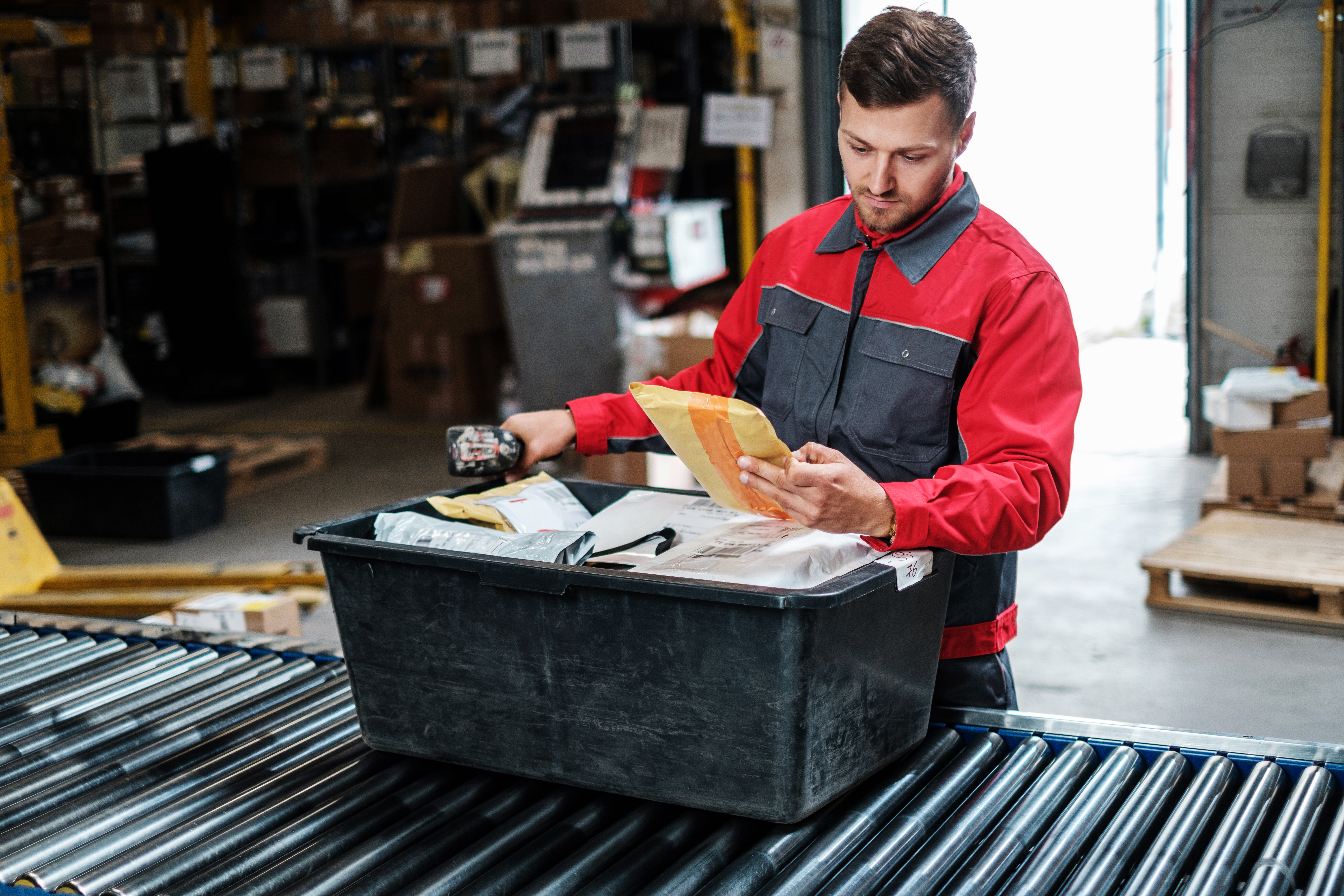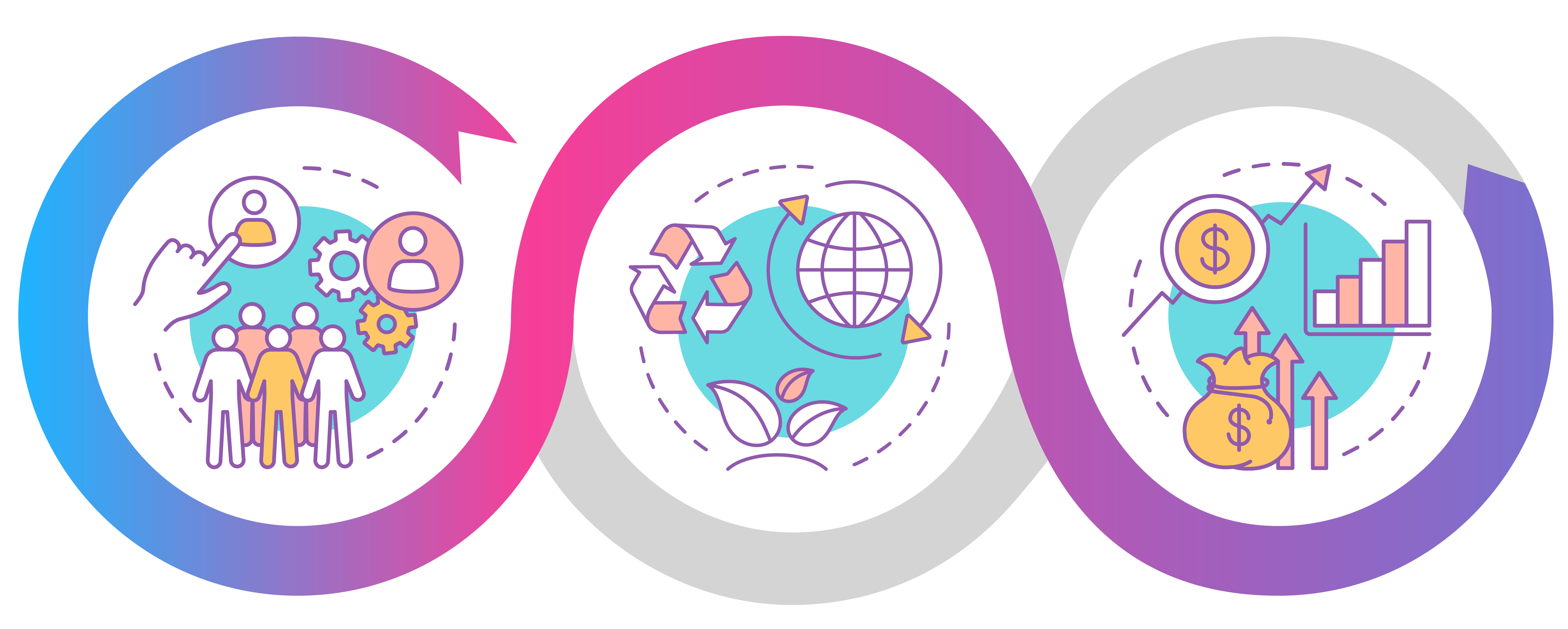Reverse Logistics is Ready for Greener Returns
By Ann-Marie Daugherty, Inmar
It’s Time
Reverse logistics is transitioning from a traditional linear method to a more sustainable circular process. Changes in shopper behaviors, rising returns, landfill capacity, escalating emissions, emerging supply chain visibility technologies — they’re all contributing to a better understanding of how consumption and the extended value chain impact our planet.
But a true circular economy can be elusive. Recyclable plastic water bottles are often counted in the circular economy, but they’re pointless if they aren’t recycled. According to HealthyHumanLife.com, Americans buy approximately 30 billion bottles of water annually, yet only one out of six actually gets recycled. The remaining 25 billion wind up in oceans and landfills — and most aren’t biodegradable.
Waste Begets Waste
Producing that much bottled water requires 17 million barrels of oil, enough to fuel more than a million cars for a year. That’s a lot of waste for a product that isn’t being reliably recycled. Plus, transporting them requires 40,000 18-wheelers — and another 33,000 to transport the remnants to landfills. According to Roadrunner Recycling, plastic water bottles discarded in landfills release methane, a greenhouse gas 84 times more potent than carbon dioxide. Making a product recyclable really only indicates its potential to be recycled. A true circular economy includes sustainable products with after-life applications, and perhaps more importantly, processes that support economic circularity.
Battling Behavior
According to Scientific American, the US accounts for only five percent of the world’s population — yet creates half its solid waste. Greendex, National Geographic and GlobeScan’s sustainable consumption index of customer behavior and material lifestyles across 18 developed countries, ranked the US dead last. That’s a clear indication we still have work to do, but behaviors are changing.
A recent survey of US consumers by Forrester, a global market research firm, revealed:
- 33 percent think more about the planet now than they did before the pandemic
- 31 percent spend more time thinking about global challenges
- 32 percent plan to prioritize companies actively reducing their environmental impact
- 68 percent plan to step up their efforts to identify eco-friendly brands
- 61 percent seek out energy-efficient labels when making purchases
Similarly, a survey by AlixPartners showed 71 percent of American consumers are now more concerned about the environment, and 28 percent say it’s impacting their buying decisions. A 2020 study by Kearney revealed nearly half the respondents thought the pandemic made them more environmentally aware. And 78 percent thought companies could be doing more to help them make eco-friendly buying decisions. Gen Z was the most concerned group, so naturally they were more interested in brands that sourced responsibly, were environmentally friendly and supported social causes.
Finding Value in Sustainability
Corporations taking proactive measures to reduce their carbon footprint are attracting like-minded consumers. In fact, 20 US companies earned a spot on the Corporate Knights’ index in 2021, which ranks the world’s most sustainable corporations. Environmental stewardship has entered the board room as well as the consumer’s psyche. This, combined with the highest return rates in history, makes reinventing reverse logistics a “need” for merchants and a “want” for consumers — two key ingredients for creating truly circular processes.
The Right Time for Reinvention
Before reinvention can begin, we need to know how big the prize is. According to the National Retail Federation, 2021 online sales surpassed the $1 trillion mark, representing 23 percent of all retail sales. On the downside, the return rate for online purchases was nearly 21 percent — meaning companies had to process $290 billion of returned goods. To put this in perspective, $290 billion in returns is more than the total US e-commerce sales in 2013.
The next step is addressing low-hanging fruit — what needs improvement rather than reinvention. One example? More than 60 percent of returns are caused by the merchant, including:
- Shipping the wrong product
- Inaccurate site content, i.e., imprecise product descriptions, sizing charts, pictures, etc.
- Arrived damaged, a possible packaging or carrier related issue
These culprits are easily addressed through quality control and minor adjustments like better visuals, sizing charts, or more detailed descriptions. The product could also be linked to the company’s Instagram page (or other social media) where shoppers can see it worn or used by others. Of course, five-star reviews help too.
For packaging, this might require added visibility and tracking — augmentation vs. full-scale reinvention, but referring to returns and damaged logs may suffice. If it’s occurring frequently with a particular SKU, then different packaging may be required. Or perhaps there’s a manufacturing defect. The same is true if a certain carrier has a disproportionate number of damaged returns.
Making Returns Green
Approximately five billion pounds of returned goods went to landfills last year. Far too many. A landfill diversion rate of 99 percent is possible with a truly integrated, end-to-end returns platform. This type of comprehensive solution reduces returns, increases sustainability by keeping returned goods in commerce, and avoids landfills through energy-from-waste programs.
When advanced analytics, artificial intelligence (AI), and machine learning (ML) are applied to captured disparate data sets, this solution identifies the potential for returns by shopper, SKU and/or the mix of items in a customer’s cart. Data collection begins with the merchant’s most valuable asset — the post-purchase customer experience. Once the shopper clicks “buy,” all relevant data is captured and uploaded to a cloud-based platform. This initiates the delivery experience, which starts when the customer receives an order confirmation email. The system retrieves customer history, fulfillment options and carrier data to give the shopper an expected delivery date. It also optimizes the delivery process by checking inventory levels by location and determining the most efficient carrier and/or route. The entire post-purchase experience is visible in real-time.
If the delivery date changes, the customer is automatically updated. The system may even offer alternative options. For example, Ms. Moore places an order for a green sweater with limited availability, expected to arrive in 10 days. The system determines there’s a better alternative and automatically sends an email stating, “Ms. Moore, the sweater you ordered is sourced from China and expected to arrive in 10 days. We offer a similar product [pictures included] that’s sourced from Milan and will arrive in 4-7 days. We’ll honor the original price regardless of the item you select. We wanted to let you know you have choices.”
A number of loyalty-building events took place in this single, automated communication. First, the message serves as a touchpoint, making the merchant more familiar. It’s personalized, which builds trust and increases the shopper’s confidence in the merchant. It’s also an appealing alternative. This type of superior customer experience lessens the likelihood of a return. In fact, a customer is likely to share their experience with others either verbally, through social media or through a product review.
The returns experience is similar in terms of choices and personalization. If Ms. Moore decided to return the sweater, she’d initiate the return on the host provider’s site via the retailer’s branded returns portal. She’d provide the reason for the return, then select the preferred processing method either an electronic QR code or a shipping label that can be printed at home or at the return drop-off location. The QR code is easier and more eco-friendly, so the retailer may encourage her to support its sustainability initiatives through that option.
The Rise of Pick-Up / Drop-Off (PUDO) Locations
Drop-off points in popular retail outlets like supermarkets, drug stores and dollar stores are expanding. This is good for host retailers, customers and the environment. For customers, it’s convenient because they’re likely to visit one of these outlets anyway. The host retailer sees more foot traffic, plus around 60 percent of returners make incremental purchases in-store. The environment benefits by combining two trips into one. This process also aggregates returns in a single location so one truck can pick up multiple packages, as opposed to a single package at each customer’s home. Similar environmental advantages exist on the pick-up side, with online shoppers shipping their orders to these same retail outlets. PUDO kiosks and lockers are gaining in popularity and offer the same convenience and environmental advantages.
Intelligence-Based Returns Processing
To optimize resale/reuse value, specialized processing facilities combine a human assessment of the returned product’s condition with ML. This assessment measures the cost of the return against its value in different markets while factoring in each manufacturer’s specific rules. Through this process, based on maximum value recovery, the system determines which disposition method is best.
Return to Shelf
Returning a product to the merchant’s shelf is the most advantageous for trading partners, provided it can be sold as new and at full price. This generates the greatest financial and environmental outcomes since the product remains in commerce and doesn’t generate waste. However, returning goods to the shelf requires the right technologies, processes, and access to a nationwide network of returns processing facilities.
 Return-to-Vendor
Return-to-Vendor
Defective goods or unwanted garments are often returned to the vendor. This is also an option for product dispositioning since the merchant will capture some of the inventory’s original value. RTV returns are often shipped by the truckload, which minimizes fossil fuel consumption and the release of CO2 emissions. Plus, these items can be placed back into commerce.
Refurbished Sales
Many companies are selling refurbished goods at discounted prices. This is a common practice that began with electronics and continues to expand into other categories. Major merchants and box stores like Amazon Renewed, Ebay Refurbished and Best Buy Outlets are strong examples of minimizing waste by keeping products in commerce. Items that can’t be refurbished are “parted out” and used for warranty and component repairs. Precious metals like gold, silver, platinum and palladium are extracted and resold, while the remaining components get recycled. Many retailers, such as Best Buy and Staples, offer electronics recycling. The EPA also has programs for donating and recycling electronics as well.
 Liquidation and Remarketing
Liquidation and Remarketing
Liquidators buy overstocks, seasonal inventory and customer returns to resell into secondary markets like bodegas, flea markets and “out-of-market” geographies. For brands, liquidation can be a slippery slope because some liquidators may not honor the manufacturer’s requirements. This weakens the brand and quickly erodes sales and margin from the manufacturer’s primary sales channels. Liquidation is a viable method for keeping large quantities of goods in commerce, but buyers must be vetted and monitored. SmartLots, America’s largest liquidator, sells only in bulk — making it a highly sustainable option for managing returned goods while increasing value recovery.
Donation
Returned goods that aren’t resold are donated to charity. While this doesn’t keep products in commerce, this merchandise does serve worthy causes and avoids landfills.
Energy-From-Waste (Destruction)
Items that can’t be sold, recycled, parted-out or donated are sent to an energy-from-waste facility. Materials entering these types of facilities are fed into combustion chambers in a self-sustaining process and heated to approximately 2000oF. As waste is burned, heat converts water into steam that turns a turbine-driven generator to produce electricity. This electricity is then sent to local utilities for use in homes and commercial properties. Each ton of waste can generate 550-700 KW hours. Steam from the process is condensed back into water and returned to the boiler tubes — making it an efficient, closed-loop system.
Focusing on the Triple Bottom Line
In 1970, economist Milton Friedman introduced the Friedman doctrine, which stated that the social responsibility of business is to increase profits. He argued that a company has no social responsibility to the public or society; its only responsibility is to its shareholders. Twenty-four years later, John Elkington, a British management consultant and sustainability guru, coined the phrase “triple bottom line” as his way of measuring performance. He believed a company could be managed in a way that generated profits while improving people’s lives and the well-being of the planet. Remaining focused on the triple bottom line will continue to drive education, sustainable products and eco-friendly processes.
Reverse Logistics is a great place to start considering sustainable returns supports all three Ps in the triple bottom line: people, planet and profit. Similar approaches and emerging technologies will ultimately transform other linear business functions into a sustainable circular economy.

 Ann-Marie Daugherty
Ann-Marie DaughertyAnn-Marie Daugherty is President, Supplytech Division. Ann-Marie’s exceptional Supply Chain leadership experience and success includes nine years with Giant Eagle in roles including Vice President of Logistics, Senior Director of Transportation and Director of Inbound Logistics and Supply Chain. Prior to that, she held several leadership roles at The Home Depot and Target.
In her career, Ann-Marie has directed numerous logistics optimization initiatives that resulted in millions of dollars in transportation savings and generated significant backhaul revenue, all while protecting the retail shelf. She earned the designation as one of Progressive Grocer’s Top Women in Grocery multiple times. Most recently, Supply and Demand Chain Executive magazine included her in their Top Women in Supply Chain (2021). She holds a BS in Business Administration from Bowling Green State University and an MBA from The Ohio State University.